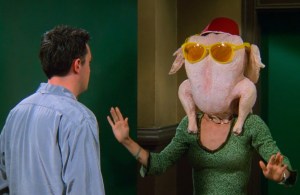Mariah Carey tried to sing “Auld Lang Syne” on New Year’s Eve but admitted that she does not know all the lyrics. The beloved singer shared a self-deprecating video on social media, where she belted out the beginning of the song before breaking down in laughter. She said, “I don’t know how it goes… I never could pronounce it properly!”
Carey recorded herself for the New Year’s Eve video, confounding fans by standing outside in the snow. She was just feet away from a door — presumably to her home — wearing a shimmering formal top as she sang her heart out for the surrounding trees. However, like many revelers on the last night of the year, Carey had to fake her way through some lines of the old song. With no crowd to mask the missing syllables, Carey had to cop to her lack of knowledge.
Videos by PopCulture.com
HAPPY NEW YEAR!!! 🎉❄️❤️ (sorry for the camera work 😂) #AuldLangSyne pic.twitter.com/gUqEe0JvO4
— Mariah Carey (@MariahCarey) January 1, 2021
“I love you. Happy New Year! Let’s hope for better days, better days in 2021 and beyond,” Carey said, half-singing the ending to her video. Fans loved the clip, in some cases because of how unfiltered it was. They praised Carey for singing for them even though she couldn’t get the lyrics right.
“THIS SOUNDS LIKE THE STUDIO VERSION! thank you for blessing our 2021 already Mariah!” one fan commented. Another wrote: “Mariah you could film a music video for ‘Auld Lang Syne’ with this extravagant view alone,” while a third added: “OK BUT CAN WE TALK ABOUT THAT TONE AND IN THE FREEZING COLD ???”
“Auld Lang Syne” is a Scots-language folk song, first published as a poem in 1788 by Robert Burns. Today it is a classic New Year’s Eve anthem in all parts of the English-speaking world. It is also popular to sing at funerals, graduations or other occasions that involve some kind of formal farewell.
Carey can be forgiven for not understanding the lyrics, which are translated or adapted to common English from the old West Germanic Scots language still spoken in parts of Scotland and Ireland today. The title roughly translates to “old long since,” although some linguists say it more accurately means “long, long ago.” Burns’ adaptation is now over 200 years old, so even it sounds far different from modern English.
According to The Burns Encyclopedia by Maurice Lindsay, Burns sent his poem to the Scots Musical Museum in 1788, admitting that it was not an original composition. he wrote: “The following song, an old song, of the olden times, and which has never been in print, nor even in manuscript until I took it down from an old man.” Traces of “Auld Lang Syne” have been found in songs and writings that pre-date Burns by hundreds of years.








